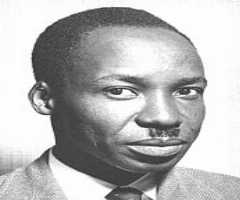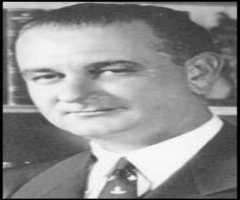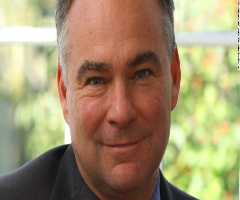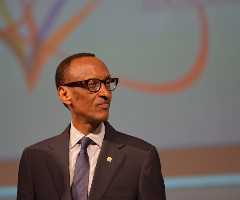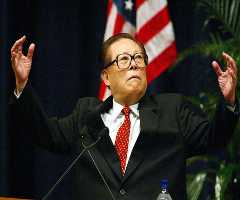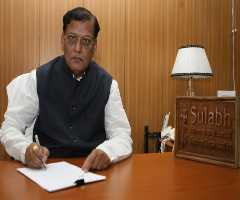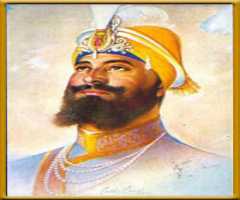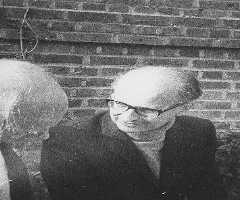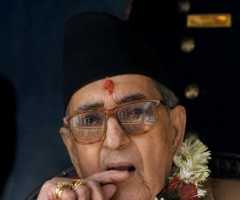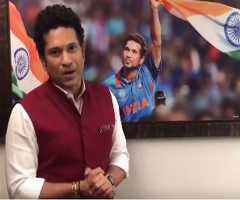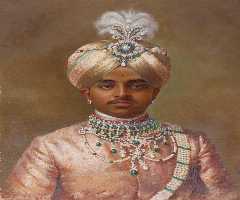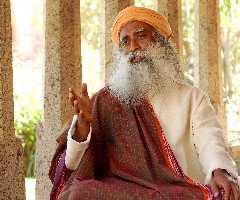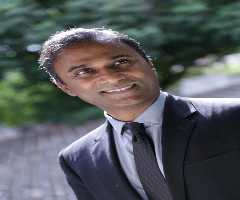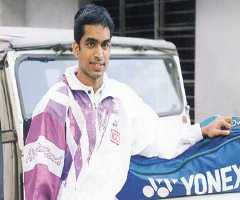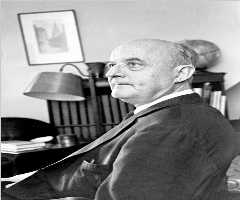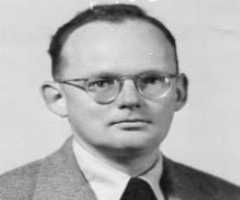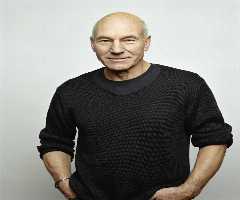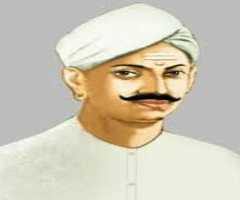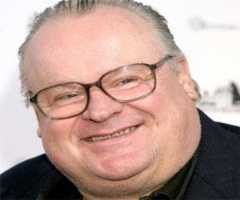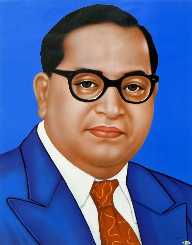
Also Known For : Chief Minister
Birth Place : Patna, Bihar, India
Died On : July 1, 1962
Zodiac Sign : Cancer
Bidhan Chandra Roy Biography, Life, Interesting Facts
Bidhan Chandra Roy was a renowned Indian physician, freedom fighter and politician. Born on July 1, 1962, Bidhan Chandra Roy was the second Chief Minister of West Bengal in India and held the post from 1948 to 1962 when Bidhan Chandra Roy died. Bidhan Roy’s term of office came with massive development and was referred as the great architect of West Bengal as he founded five eminent cities, Habra Bidhannagar, Durgapur, Ashokenagar, and Kalyani. As an alumnus of the Medical College Calcutta of the University of Calcutta, Bidhan Chandra Roy was one of the few Indians to simultaneously complete an F.R.CS and M.R.C.P degrees. His contribution to the medical field was enormous as he helped establish some medical institutions in Calcutta.
Bidhan Chandra Roy taught in institutions like Calcutta Medical College, Campbell Medical School and then to the Carmichael Medical College. Bidhan Chandra Roy also served as the vice-chancellor at the University of Calcutta. Roy’s contribution to the struggle for independence and post-independence and development of the country has not gone unnoticed. His birth and death day that is 1 July is set aside as the National Doctors Day in India. On February 4, 1961, Bidhan Chandra Roy was awarded India’s highest civilian honor Bharat Ratna.
Early Life
Bidhan Chandra Roy was born on July 1, 1882, in B.M Das Road Patna, Bihar to Prakash Chandra Roy and Aghorkamimi Devi. Bidhan Chandra Roy was the youngest child of five by his parents. Bidhan Chandra Roy was a brilliant child and was excellent in academics. In 1897, Bidhan Chandra Roy passed his Matric examination from the Patna Collegiate School. Bidhan Chandra Roy continued his education at the Presidency College, Calcutta where Bidhan Chandra Roy obtained his I.A. Roy then enrolled at the Patna College and graduated with a B.A with honors in Mathematics. Seeking for academic excellence, Bidhan Chandra Roy applied to the Calcutta Medical College and Bengal Engineering College and gained admission to both. However, due to his interest in the medical field, Bidhan Chandra Roy enrolled at the Calcutta Medical College.
At the medical school, an inscription he came across that read, “Whatever thy hands findeth to do, do it with thy might,” inspired him. This quote became his source of inspiration for the rest of his life. After his father retired from his work as a Deputy Collector, things became difficult for Roy as Bidhan Chandra Roy was not receiving the necessary funds for his education. Bidhan Chandra Roy managed to get a scholarship and had to cut on expenditure, saving on books by relying on the library and borrowing notes.
Career
Bidhan Chandra Roy started his career in the medical field as soon as he completed his education by joining the Provincial Health Service. With dedication, he served in all positions, including giving out prescriptions as well as serving as a nurse when the in charge are not around. Bidhan Chandra Roy also served as a private doctor at his free time with little charge. With the quest to continue his education, Bidhan Chandra Roy traveled to England in February 1909 with an aim to enrol at the St Bartholomew’s Hospital.
Bidhan Chandra Roy was, however, refused admission because the Dean was unwilling to admit students from Asia. He never looked hope and continued to pursue an admission. Bidhan Chandra Roy finally gained admission after his 30th admission request. With positive attitude and dedication towards his studies, Bidhan Chandra Roy was able to complete his M.R.CP and F.R.C.S within two years and three months. Immediately after his studies, Bidhan Chandra Roy returned to India in 1911 to serve his country. Roy taught at his alma mater, Calcutta Medical College on his return. He later moved to the Campbell Medical School and then to the Carmichael Medical College.
Bidhan Chandra Roy was always concerned about the health of the people and was optimistic that with the healthy and strong mind of the people, it would be easier to achieve Swaraj. Bidhan Chandra Roy, therefore, contributed immensely to the organization of medical education and also established the Jadavpur T.B. Hospital, Chittaranjan Seva Sadan, Kamala Nehru Hospital, Victoria Institution and the Chittaranjan Cancer Hospital. In 1926, the Chittaranjan Seva Sadan for children and women but it had low patronage because the women were reluctant to visit the hospital. With the intervention of Dr. Roy and his team, the women started to patronize it.
Bidhan Chandra Roy provided air-raid shelters for schools and colleges for their classes after Rangoon fell to Japanese bombing in 1942. Aside from that Dr. Roy who was the vice-chancellor of the University of Calcutta at the time supported the students and teachers with relief items. This gesture gained him an honorary Doctorate of Science in 1944. He was always positive about the youth and believed the future of India would depend on well-equipped and educated youth.
Politics
Dr. Roy’s political career began in 1925 when he contested as an independent candidate for the Barrackpore Constituency for the Bengal Legislative Council. Bidhan Chandra Roy was able to defeat Surendranath Banerjee for who considered as the "Grand Old Man of Bengal."Dr. Roy set the ball rolling immediately he took over by proposing the study of the causes of pollution in Hoogly. He also proposed measures to take to prevent future pollutions. In 1928, he was elected to serve on the All India Congress Committee. Bidhan Chandra Roy proved himself to be an astute politician and ensured he had good relations with other politicians. In 1929, he successfully organized the Civil Disobedience in Bengal.
Bidhan Chandra Roy gained recognition with that act and in 1930 was nominated by Pandit Motilal Nehru as a member of the Working Committee (CWC). Activities of CWC were considered illegal and therefore declared as an unlawful organization. On August 26, 1930, Bidhan Chandra Roy and other members of CWC were arrested and detained at the Central Alipore Jail I Calcutta by the British government. Upon his release, became the Alderman of the Calcutta Corporation from 1930 to 1931.
In 1933, Bidhan Chandra Roy became the mayor of Calcutta. Under his leadership, the Corporation made giant strides in the area of education, health, infrastructure, roads and the improvement in the water supply. Bidhan Chandra Roy was also in charge of giving out grants in aid to the hospital and other charitable donations.
Appointment
With a proven track record in politics, Bidhan Chandra Roy was chosen by the Congress Party for the Chief Minister of Bengal. Though he initially reluctant to take the position to focus on his profession, Gandhiji who convinced him to pick up the position. Bidhan Chandra Roy was a friend and doctor to Gandhiji. He finally accepted the post, and on January 23, 1948, Bidhan Chandra Roy was sworn into office. At the time he took office, Bengal was in crises with high crime rate, food shortage, unemployment among others. Bidhan Chandra Roy was able to bring peace and tranquillity to Bengal and founded five cities, Habra Bidhannagar, Durgapur, Ashokenagar, and Kalyani.
Personal Life
Bidhan Chandra Roy was never married. After an active day on July 1, 1962, including treating his morning patients, taking over some political works he died at midday. Bidhan Chandra Roy gave his home out for the running of a nursing home named after his mother, Aghorkamini Devi.
Honors And Awards
In 1967The Bidhan Chandra Roy Memorial Library and Reading Room for Children in the Children's Book Trust, New Delhi was established, in1976, an award scheme, The B.C Roy National Award was established to honor works in the field of medicine, politics, science, philosophy, literature, and arts.
More Politicians
More People From Bihar
-
![Bindeshwar Pathak]()
Bindeshwar Pathak
-
![Jayaprakash Narayan]()
Jayaprakash Narayan
-
![Priyanka Chopra]()
Priyanka Chopra
-
![Guru Gobind Singh]()
Guru Gobind Singh
-
![Imre Lakatos]()
Imre Lakatos
-
![Girija Prasad Koirala]()
Girija Prasad Koirala
